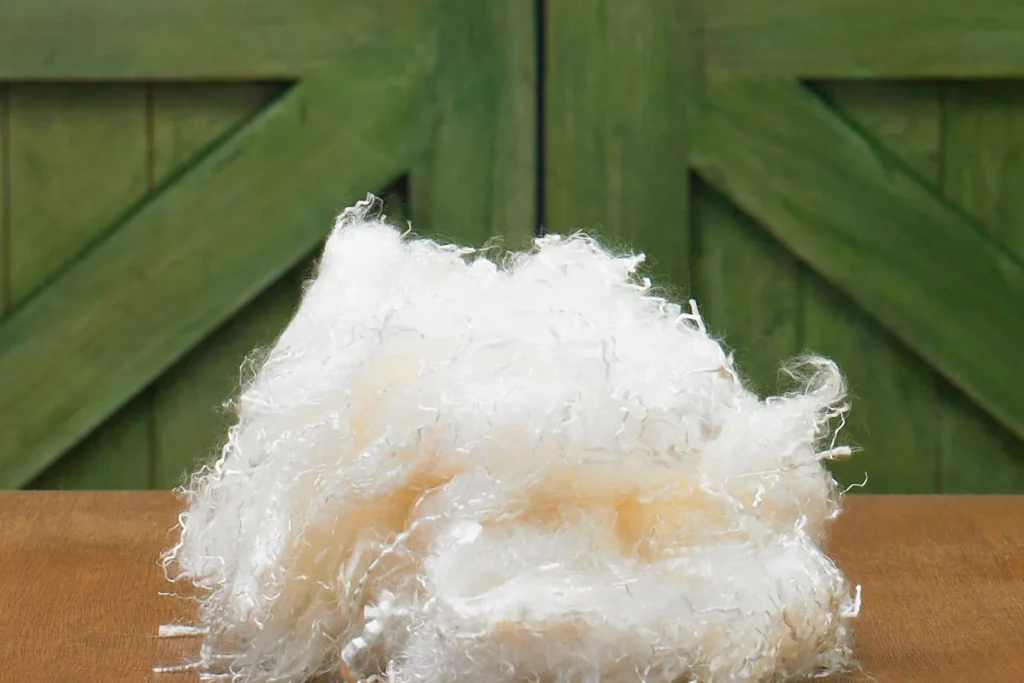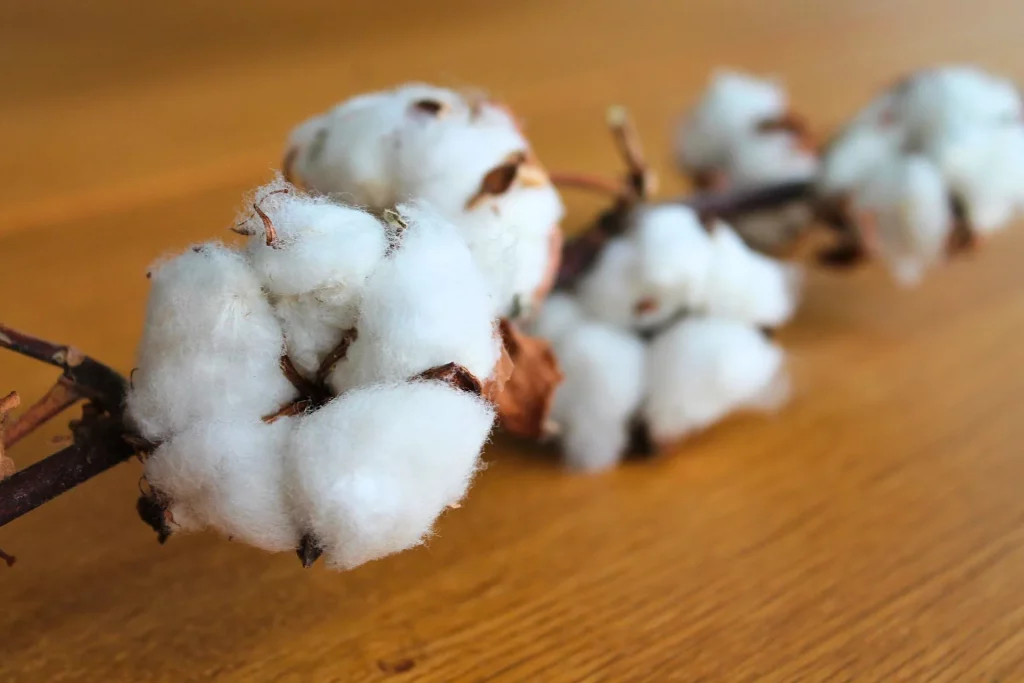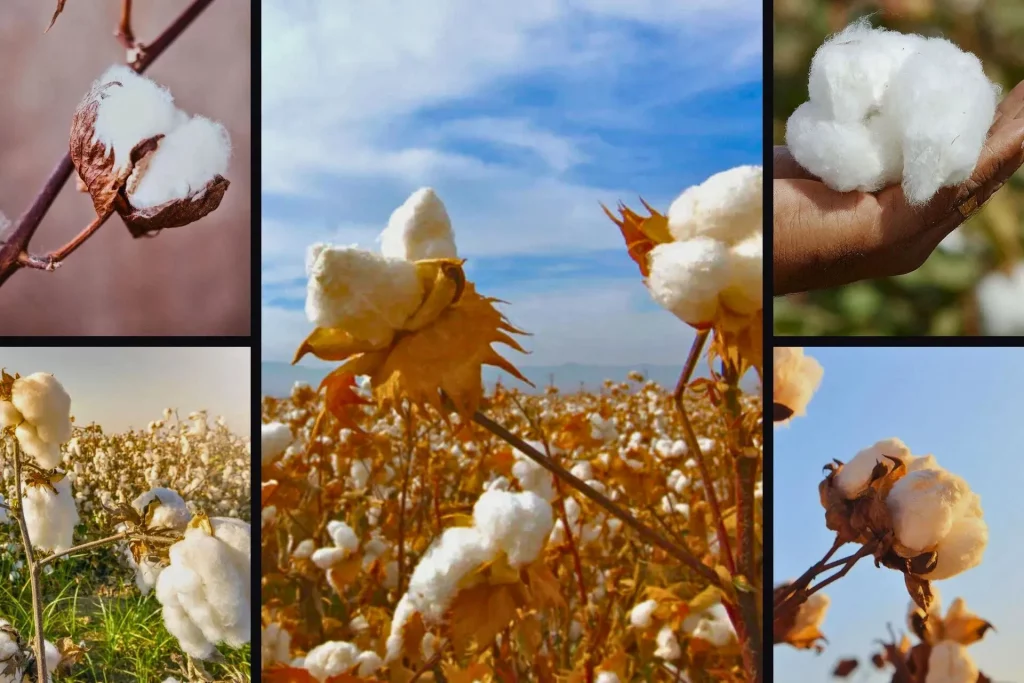In a world brimming with choices, each stitch in the fabric of our lives reflects a unique decision. For those standing at the crossroads of “Lyocell vs. Cotton,” the quest for the perfect fabric is not just about comfort or style; it’s all about navigating a labyrinth of personal values and global consequences.
As you embark on this textile journey, consider the genuine problem at hand: how to balance the desire for softness and affordability with the weight of environmental responsibility. The fabric you choose is not just an outfit; it is a statement—an intertwined exploration of conscience and comfort. Let’s unravel the threads of this problem together.
Table of Contents
What Is Lyocell?

Lyocell is a fabric that is created from wood pulp using a closed-loop technique to reduce its negative effects on the environment. It stands out for its softness, moisture-wicking abilities, and slight sheen, making it comfortable and elegant. Lyocell is also hypoallergenic and sourced from renewable trees, contributing to its sustainability. Compared to conventional cotton, it can use significantly less water in production, appealing to environmentally conscious consumers seeking both comfort and eco-friendliness.
Tencel:
Tencel initially trademarked as such in 1982, played a pivotal role in the evolution of lyocell fabric. Lyocell, the broader category encompassing Tencel, became a genericized trademark commonly used to describe the process of extracting fibers from cellulose. This innovation in textile production emerged from the efforts of American Enka, who pioneered lyocell in 1972. The primary goal behind the creation of Tencel and the development of lyocell was to produce a fabric that was not only soft and versatile but also environmentally friendly.
Pros and cons of Lyocell:
Pros of Lyocell:
-
Sustainability: Lyocell is produced from renewable wood pulp, and its manufacturing process is eco-friendly, using a closed-loop system that recycles chemicals and minimizes waste.
-
Softness: Lyocell is incredibly soft and comfortable to wear, making it a favored choice for clothing and bedding.
-
Moisture-Wicking: It has excellent moisture-wicking properties, meaning it can absorb and release moisture efficiently, keeping the wearer dry.
-
Hypoallergenic: Lyocell is less likely to cause allergic reactions as it’s naturally hypoallergenic and doesn’t trap allergens.
-
Breathability: The fabric is breathable, making it suitable for warm and humid conditions.
-
Durability: It’s relatively durable and can withstand regular wear and washing.
Cons of Lyocell:
-
Wrinkling: Lyocell can be prone to wrinkling, so it may require more ironing or care to maintain a smooth appearance.
-
Pilling: In some cases, Lyocell fabrics can develop pilling (small, fuzzy balls) on the surface after repeated use and washing.
-
Cost: Due to their sustainable manufacturing process, Lyocell products can be more expensive than some other fabrics.
-
Shrinkage: While less prone to shrinkage compared to cotton, Lyocell can still shrink if exposed to high heat during washing or drying.
-
Limited Color Retention: Some Lyocell fabrics may not retain color vibrantly like other materials.
-
Niche Market: Lyocell is not as widely available as cotton, which might limit choices for consumers in certain regions.
When it comes to the wear and wash of Lyocell textiles, proper care is essential. Just like with other delicate fabrics, such as Egyptian cotton sheets, you’ll want to follow specific guidelines for maintenance.
What is Cotton?

Cotton, a natural wonder in the textile world, is a plant-based fiber with a rich history dating back thousands of years. Renowned for its unmatched softness and breathability, cotton is a testament to comfort and versatility.
Its fibers, carefully cultivated from the cotton plant’s fluffy bolls, have woven their way into countless aspects of our lives. From the cozy embrace of a cotton t-shirt to the crisp freshness of cotton bed linens, this remarkable fiber embodies comfort and timeless appeal.
Cotton’s ability to effortlessly absorb moisture and allow air circulation makes it an ideal choice for warm-weather clothing and a range of textiles. In addition to its comfort, cotton’s biodegradability and ease of care further enhance its reputation as a beloved and sustainable textile, celebrated for its natural beauty and everyday practicality.
Types of Cotton:

Cotton comes in various types, each with unique characteristics. Some common cotton types include:
- Long-Staple Cotton:
Long-staple cotton, often referred to as ELS (Extra-Long Staple) cotton, is known for its extended fiber length. Cotton fibers in this category typically measure at least 1.125 inches (28.575 mm) long. The most celebrated types of Long-Staple Cotton comprise Pima Cotton and Egyptian cotton.
-
Pima Cotton: It is grown primarily in the United States; it boasts exceptionally long fibers, which contribute to its remarkable softness and durability. It’s a preferred choice for luxury bed linens, high-end clothing, and other premium textiles.
-
Egyptian Cotton: Grown primarily in Egypt’s Nile River Valley, Egyptian cotton is renowned for its exquisite quality. Its lengthy fibers and the region’s unique climate produce cotton with superior softness and strength. Egyptian Cotton is highly sought after for luxury bedding, towels, and fine apparel.
- Short-Staple Cotton:
Short-Staple Cotton, also known as Upland Cotton, features shorter fiber lengths compared to Long-Staple Cotton. These cotton fibers measure less than 1.125 inches (28.575 mm) in length. The most celebrated types of short-staple Cotton include upland cotton.
-
Upland Cotton: The most extensively farmed cotton type worldwide is upland cotton. While it may have shorter fibers, it is incredibly versatile. It’s used in a wide range of textile products, including everyday clothing, sheets, and towels.
Pros and Cons of Cotton:
Pros of Cotton:
-
Comfort: Cotton is renowned for its softness and comfort, making it a favored choice for clothing, bedding, and other textiles.
-
Breathability: It is highly breathable and allows for excellent air circulation, making it comfortable to wear in hot and humid conditions.
-
Absorbency: By wicking away sweat and moisture, cotton’s superior moisture-absorbing qualities help keep the body dry.
-
Versatility: Cotton is used in a wide range of products, from everyday apparel like t-shirts and jeans to bed linens, towels, and more.
-
Biodegradability: Cotton is a biodegradable natural fiber, meaning it breaks down naturally and does not contribute significantly to environmental pollution.
-
Durability: While not as strong as some synthetic fibers, cotton is known for its durability and ability to withstand regular use and washing.
-
Hypoallergenic: Cotton is less likely to cause allergic reactions, making it a suitable choice for individuals with sensitive skin.
Cons of Cotton:
-
Wrinkling: Cotton fabrics can be prone to wrinkling, which may require ironing or additional care to maintain a smooth appearance.
-
Shrinkage: Some cotton fabrics may shrink if exposed to high heat during washing or drying, requiring careful laundering.
-
Color Retention: Over time, certain cotton fabrics may not retain their colors as vibrantly as synthetic materials.
-
Environmental Impact: Conventional cotton cultivation can be resource-intensive, requiring significant water and pesticide use. However, sustainable practices such as organic cotton farming aim to mitigate these issues.
-
Less Moisture-Wicking: While cotton is absorbent, it may not wick moisture away as efficiently as some synthetic fabrics, which can lead to discomfort in extremely sweaty conditions.
Importance of Choosing the Right Fabric:
Choosing the right fabric is a decision that extends far beyond mere aesthetics or personal style. It holds profound implications for our comfort, well-being, and the environment. The importance of selecting the appropriate fabric cannot be overstated, as it resonates with several key facets of our lives:
- Comfort:
The fabric we wear directly impacts our comfort. The right choice ensures we feel at ease in our clothing, bedding, and other textile products.
- Health and Allergies:
For individuals with allergies or sensitivities, choosing hypoallergenic fabrics can prevent discomfort and allergic reactions.
- Durability:
The longevity of textiles matters. Durable fabrics can save us money over time and reduce waste by requiring less frequent replacement.
- Moisture Management:
In varying climates, the ability of a fabric to manage moisture, keeping us dry or warm as needed, can be crucial for comfort.
- Cost-Efficiency:
While quality often comes at a price, selecting the right fabric ensures that we get value for our investment.
In essence, the fabric we choose touches every aspect of our lives, from our well-being to our environmental impact and personal style. By making informed decisions about the textiles we use, we can align our choices with our values and create a more comfortable, sustainable, and meaningful lifestyle.
Points To Keep In Mind When Buying:
When buying textiles, such as clothing, bedding, or other fabric-based products, several key points should be kept in mind to ensure a satisfactory purchase:
-
Fabric Type: Consider the type of fabric used. Choose the option that best meets your preferences and needs from materials like Cotton or Lyocell, which both provide a variety of textures and features.
-
Purpose: Find out how the product is meant to be used. Different fabrics excel in various applications, so ensure the fabric aligns with its intended purpose, whether it’s for clothing, bedding, or other uses.
-
Sustainability: If environmental concerns are important to you, opt for fabrics with eco-friendly production processes, such as Lyocell. Look for certifications like organic or sustainable labels.
-
Comfort: Prioritize comfort. Softness, breathability, and moisture-wicking properties can significantly impact your satisfaction with the product.
-
Allergies: If you have skin sensitivities or allergies, choose hypoallergenic fabrics like Lyocell, which are less likely to cause skin irritation.
Similarities: Lyocell vs. Cotton
Certainly, here are some similarities between Lyocell and Cotton:
| Characteristic | Lyocell | Cotton |
|---|---|---|
| Natural Origins | Derived from wood pulp. | Grown from cotton plants. |
| Breathability | Highly breathable, suitable for various climates. | Highly breathable, comfortable in all conditions. |
| Comfort | Known for exceptional softness and comfort. | Long-standing reputation for softness and comfort. |
| Biodegradability | Biodegradable, decomposes naturally. | Biodegradable and eco-friendly. |
| Hypoallergenic | Often hypoallergenic, suitable for sensitive skin. | Generally hypoallergenic, gentle on the skin. |
| Versatility | Versatile, used in various products. | Widely used in clothing, bedding, and more. |
Although Lyocell and Cotton have many things in common, they also differ in certain ways, as shown in the comparison chart above, allowing customers to pick the fabric that best meets their requirements and tastes.
Differences: Lyocell vs. Cotton
Certainly, here’s a table highlighting the key differences between Lyocell and Cotton:
| Aspect | Lyocell | Cotton |
|---|---|---|
| Softness | Exceptionally soft and smooth from day one. | Soft and comfortable, but may not be as smooth. |
| Moisture-Wicking | Excellent moisture-wicking properties, keeping dry. | Good absorbency but may not wick moisture as efficiently. |
| Breathability | Highly breathable, suitable for hot and humid climates. | Highly breathable and comfortable in various conditions. |
| Environmental Impact | Sustainable sourcing and closed-loop production processes reduce environmental impact. | Resource-intensive cultivation but sustainable practices like organic cotton exist |
| Durability | Durable but may be prone to pilling over time. | Long-lasting and able to resist repeated washing. |
| Cost | Can be relatively expensive due to sustainable production. | Generally more affordable and widely available. |
| Maintenance | Prone to wrinkling; may require ironing. | May shrink if exposed to high heat during washing/drying |
| Biodegradability | Biodegradable and decomposes naturally. | Biodegradable and eco-friendly |
| Allergenic Properties | Hypoallergenic, less likely to cause allergic reactions. | Generally hypoallergenic and suitable for sensitive skin. |
This table provides a quick overview of the key characteristics that differentiate Lyocell and Cotton, helping consumers make informed choices based on their priorities and needs.
Frequently Asked Questions:
Is Lyocell more sustainable than Cotton?
Yes, Lyocell is often considered more sustainable due to its eco-friendly production process and potential for lower environmental impact.
Is Cotton more affordable than Lyocell?
Cotton is typically more affordable than Lyocell, which can be pricier due to its sustainable production processes.
Which fabric is better for hot and humid climates?
Both Lyocell and Cotton are breathable and suitable for such climates, but Lyocell’s moisture-wicking properties can make it a preferred choice.
Do Cotton and Lyocell Have Different Care Requirements?
Yes, Cotton can withstand higher heat during washing and drying, while Lyocell requires gentler care with cold water and low-heat drying.
Which Fabric Is Better for Sensitive Skin: Cotton or Lyocell?
Both are suitable, but Lyocell, with its smoother texture, is often preferred for sensitive skin due to its hypoallergenic properties.
How do you wash Lyocell fabric?
To wash Lyocell fabric, use cold or lukewarm water and a mild detergent. Avoid bleach and fabric softeners. Machine wash on the gentle cycle with similar colors. Remove promptly from the machine to prevent wrinkles. To maintain its shape and smoothness, tumble drying on low heat or air drying is suggested.
Conclusion:
Both fabrics have merits and demerits in the Lyocell vs. Cotton showdown. The choice ultimately hinges on your values, needs, and the specific context of your usage. By being aware of the concepts that characterize these materials, you may make an informed decision that fits your preferences and the kind of world you wish to live in.

